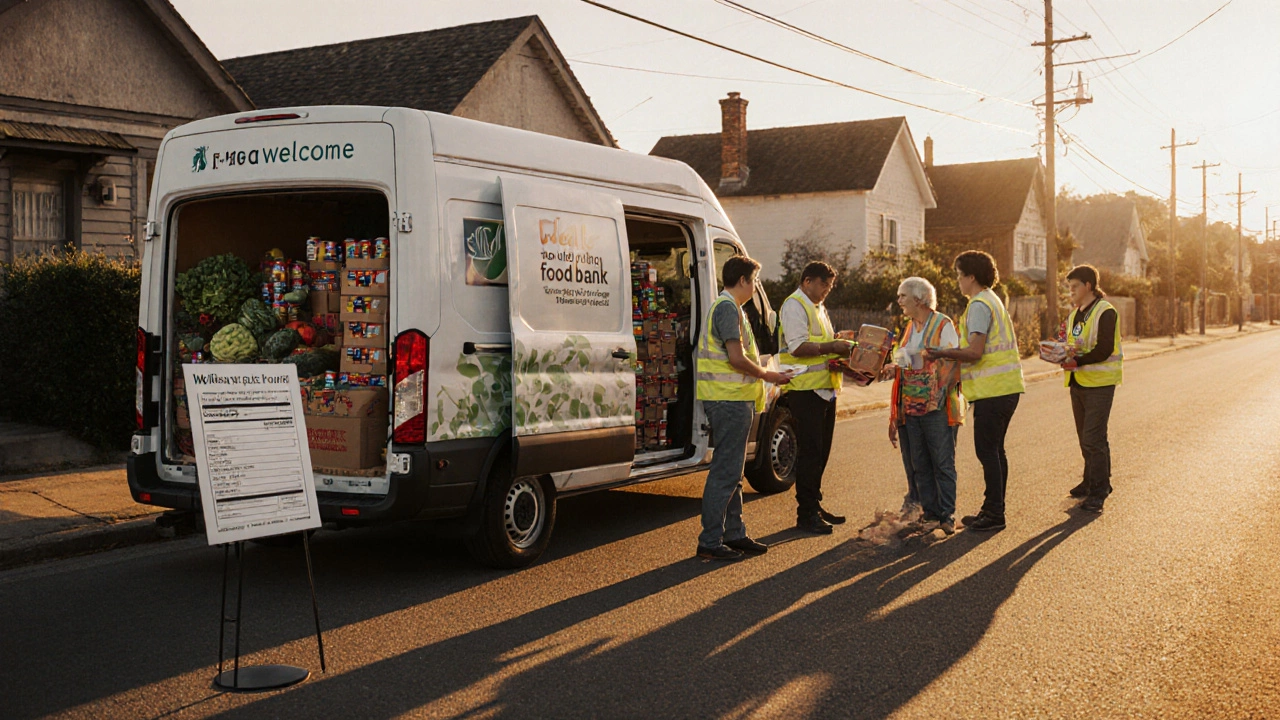Understanding Community Outreach: Definition, Goals, and Best Practices
 Oct, 19 2025
Oct, 19 2025
Community Outreach Method Selector
Choose Your Outreach Goals
Select your primary objective to identify the best outreach method
Select Your Target Audience
Choose your primary audience demographic
Budget Range
What's your estimated budget for this initiative?
Recommended Outreach Methods
Community Event
High visibility awareness building
Door-to-Door Canvassing
Personal trust building with households
Social Media Campaign
Reaching younger demographics quickly
Note: The top recommended method will be highlighted based on your selections.
When we talk about community outreach is a strategic effort by organizations to connect with, support, and involve local residents or specific groups, we’re looking at a purposeful bridge between an organization and the people it serves.
Why Effective Community Outreach Matters
Good community outreach builds trust, raises awareness of resources, and creates a sense of belonging. A nonprofit that regularly engages its neighbors can see higher volunteer retention, more donations, and better outcomes for the populations it serves. Communities that feel heard are also more likely to collaborate on solving local challenges, from food insecurity to youth unemployment.
Core Components of a Solid Outreach Program
Every successful outreach effort rests on a handful of building blocks. Below are the most common pieces, each introduced with a brief definition.
- Nonprofit organization is a tax‑exempt entity that pursues a social mission rather than profit. Understanding its mission clarifies why outreach matters.
- Volunteer is a person who contributes time and skills without monetary compensation. Volunteers amplify reach and bring local credibility.
- Stakeholder is a any individual or group with an interest in the program’s success, such as donors, community leaders, or government agencies. Engaging stakeholders early secures support.
- Needs assessment is a systematic process to identify gaps, priorities, and resources within a target community. It prevents wasted effort.
- Partnership is a collaborative relationship between two or more organizations that share resources and expertise. Partnerships widen impact and reduce costs.
- Impact evaluation is a methodology for measuring the outcomes of an outreach initiative against its original goals. It proves value to funders.
- Target audience is a specific segment of the community the program aims to serve, defined by age, location, or need. Proper targeting improves relevance.
Step‑by‑Step Guide to Planning an Outreach Initiative
- Define the mission. Write a one‑sentence purpose that ties the outreach to the organization’s core values.
- Conduct a needs assessment. Use surveys, focus groups, or public data to pinpoint what the community actually requires.
- Identify the target audience. Segment by demographics, geography, or specific challenges (e.g., “single‑parent families in the Westside district”).
- Map stakeholders and partners. List local schools, faith groups, businesses, and municipal agencies that could help.
- Choose outreach methods. Pick tactics that match the audience’s communication preferences (see the comparison table below).
- Develop a timeline and budget. Allocate staff hours, venue costs, materials, and any technology fees.
- Train volunteers and staff. Provide scripts, cultural‑sensitivity briefings, and safety guidelines.
- Launch the program. Execute the planned activities, keeping a flexible mindset for on‑the‑ground adjustments.
- Collect data for impact evaluation. Track attendance, satisfaction scores, and any measurable outcome (e.g., number of meals served).
- Report and refine. Share results with donors and partners, then tweak the next cycle based on feedback.

Comparing Common Outreach Methods
| Method | Typical Cost | Reach Potential | Best For |
|---|---|---|---|
| Community event (fair, health screening) | Medium‑high | 200‑1,000 attendees | High‑visibility awareness |
| Door‑to‑door canvassing | Low | 50‑300 households | Personal trust building |
| Social‑media campaign | Low‑medium | Thousands online | Younger demographics, rapid updates |
| School partnership workshops | Low | 100‑500 students | Education and youth engagement |
| Mobile resource van | High | Variable, depends on route | Geographically dispersed needs |
Measuring Success: Key Metrics and Tools
Numbers speak louder than anecdotes. Here are five metrics that most programs track:
- Attendance / participation rate: How many people actually showed up versus those invited.
- Volunteer hours contributed: Total time donated, useful for impact reporting.
- Satisfaction score: Post‑event surveys on a 1‑5 scale give quick feedback.
- Behavioral change: For health‑related outreach, track follow‑up actions like vaccination uptake.
- Media reach: Impressions from social posts, press coverage, or newsletter opens.
Tools such as Google Forms, SurveyMonkey, and simple Excel dashboards can capture these data points. For larger NGOs, a dedicated impact‑management platform (e.g., ClearImpact) streamlines reporting.
Common Pitfalls and How to Avoid Them
- Skipping the needs assessment. Without real data, you risk offering services no one wants.
- Over‑promising resources. Commit only to what your budget and staff can sustain; otherwise credibility suffers.
- Ignoring cultural nuances. Engage local leaders early to ensure messaging respects community values.
- Failing to follow up. A single event is rarely enough; schedule post‑event check‑ins to keep momentum.
- Neglecting impact evaluation. Funders and donors need evidence; set up measurement plans from day one.

Real‑World Examples of Impactful Outreach
Example 1 - Food Bank Mobile Outreach: A regional food bank launched a van that visited low‑income neighborhoods twice a month. By pairing the van with a brief nutrition workshop, they increased weekly pantry visits by 35% within three months.
Example 2 - Youth Mentoring in After‑School Clubs: A youth organization partnered with local schools to run weekend coding clubs. Volunteers provided one‑on‑one mentorship, resulting in a 20% rise in high‑school graduation rates among participants.
Example 3 - Environmental Clean‑Up Partnerships: An environmental nonprofit teamed up with a municipal park service. They organized quarterly clean‑ups, recruited 150 volunteers each time, and reported a 40% reduction in litter over a year.
Quick Checklist Before You Launch
- Clear mission statement tied to organizational goals
- Validated community needs through surveys or focus groups
- Defined target audience and demographic profile
- List of stakeholders and confirmed partners
- Selected outreach methods matched to audience preferences
- Budget approved and staff/volunteer roles assigned
- Data‑collection plan for impact evaluation ready
- Post‑event follow‑up schedule set
Frequently Asked Questions
What exactly is community outreach?
Community outreach is a purposeful set of activities that organizations use to connect with, inform, and serve a specific group of people, often aimed at improving wellbeing, awareness, or participation.
Who should lead an outreach program?
Typically a program manager or community liaison who understands both the organization’s mission and the local context leads the effort, supported by volunteers and partner representatives.
How much does a small outreach event cost?
Costs vary widely, but a modest neighborhood health fair can be run for $1,000-$3,000 covering venue, flyers, basic supplies, and refreshments.
What are the best ways to measure impact?
Combine quantitative metrics (attendance, volunteer hours, surveys) with qualitative feedback (stories, testimonials). Use a simple spreadsheet or a dedicated impact‑tracking platform to keep data organized.
Can community outreach be done entirely online?
Digital outreach works well for tech‑savvy populations, but it often lacks the personal trust built through face‑to‑face interaction. A hybrid approach-online promotion plus occasional in‑person events-usually yields the best results.